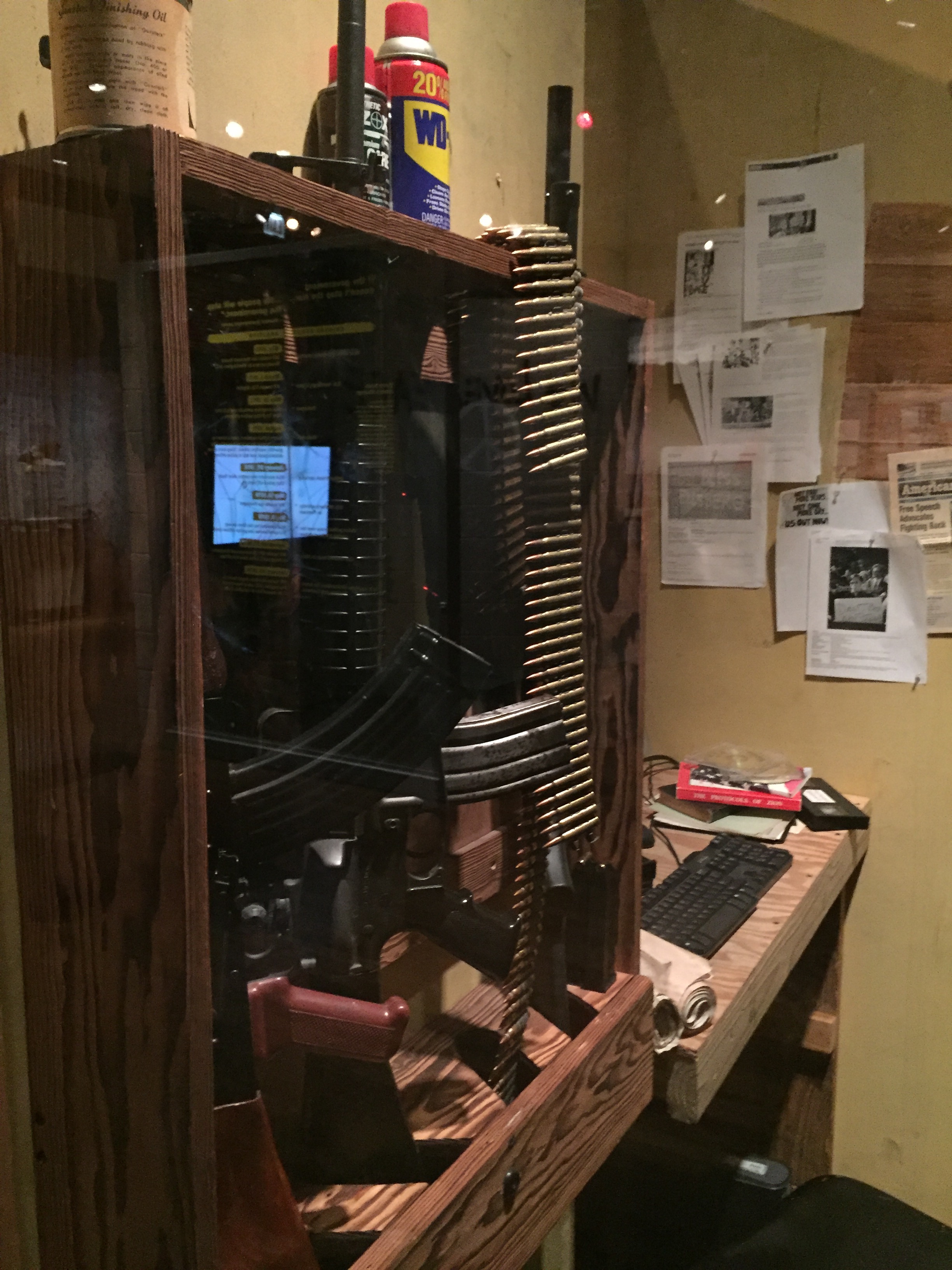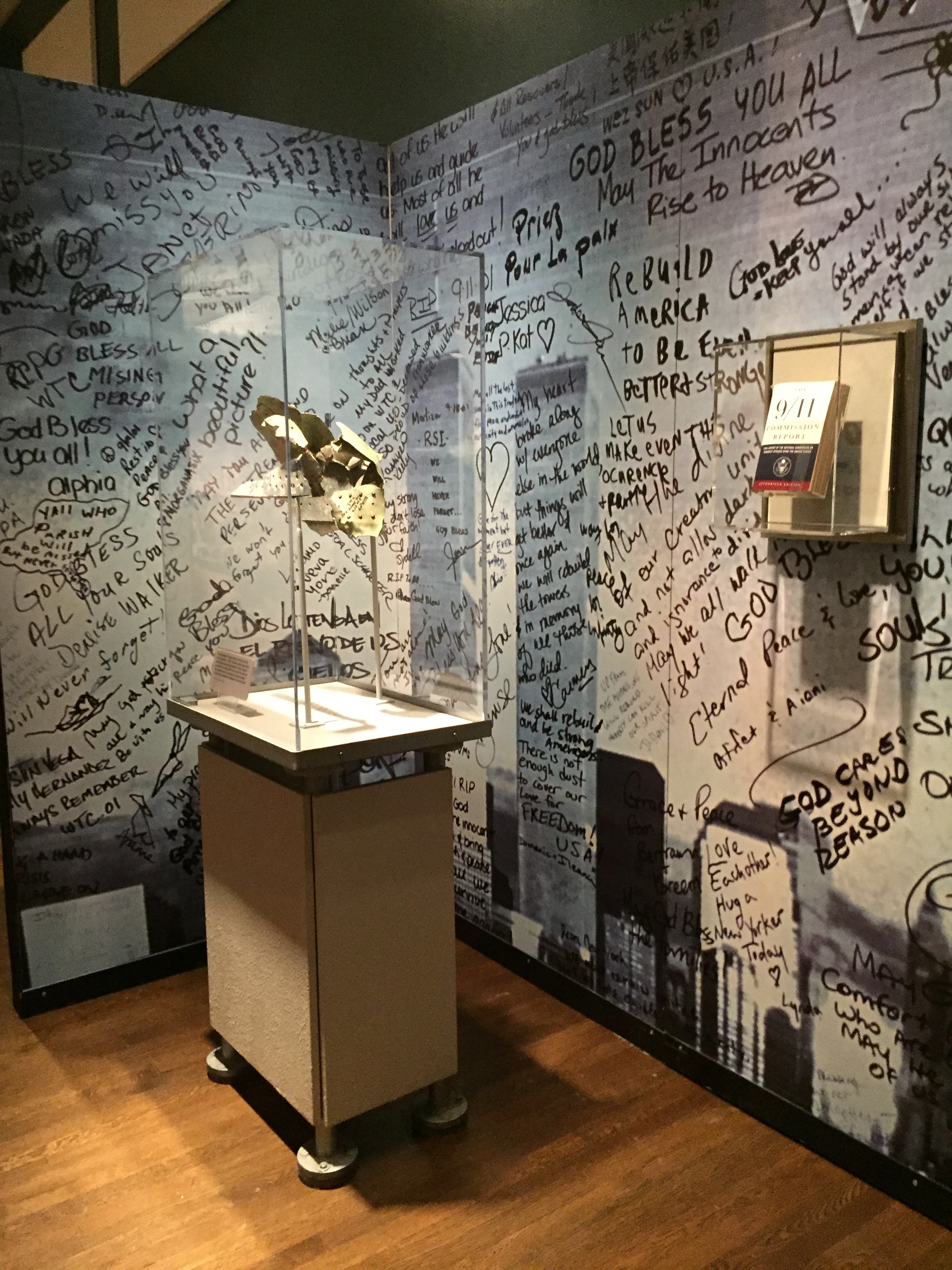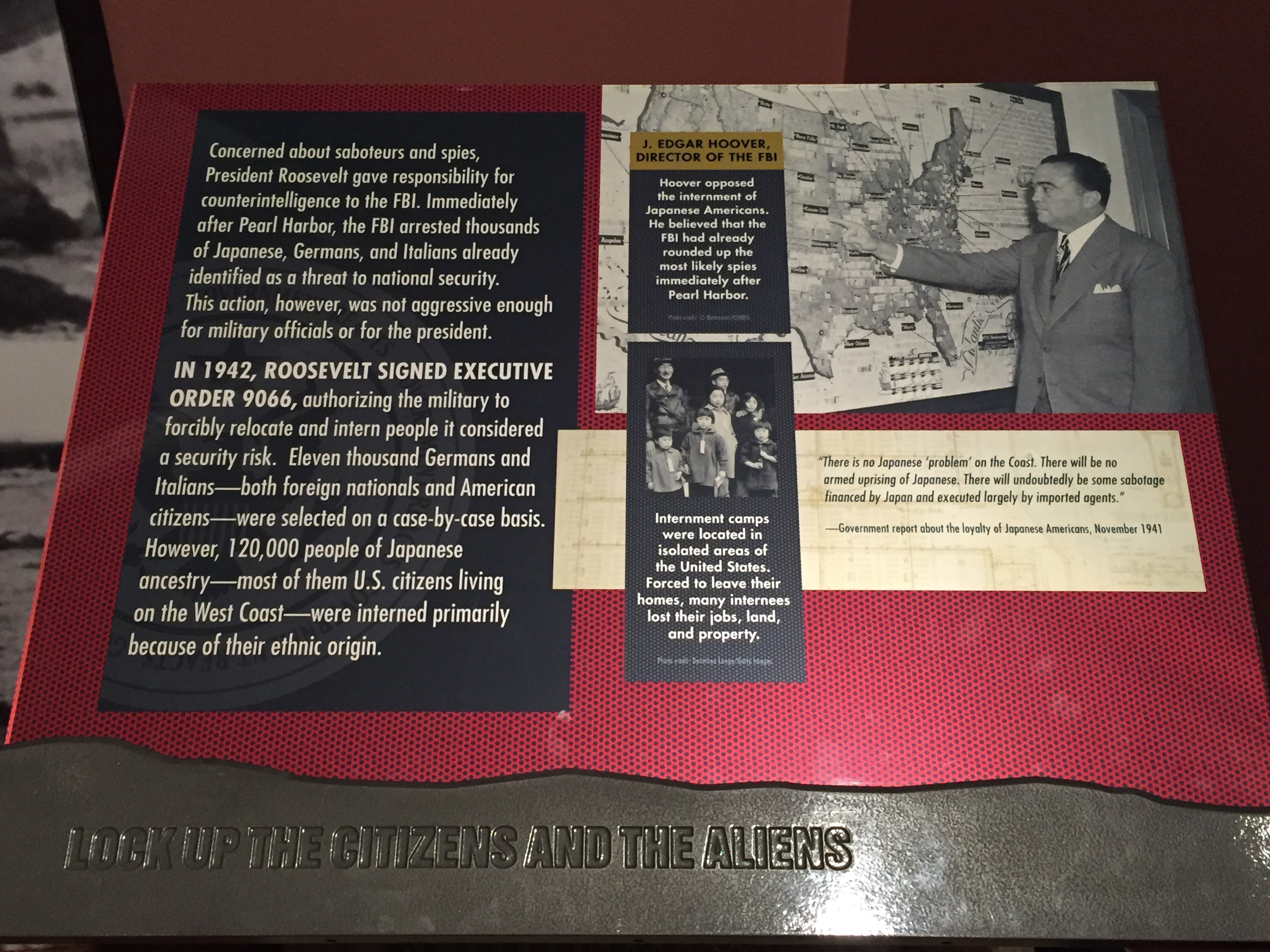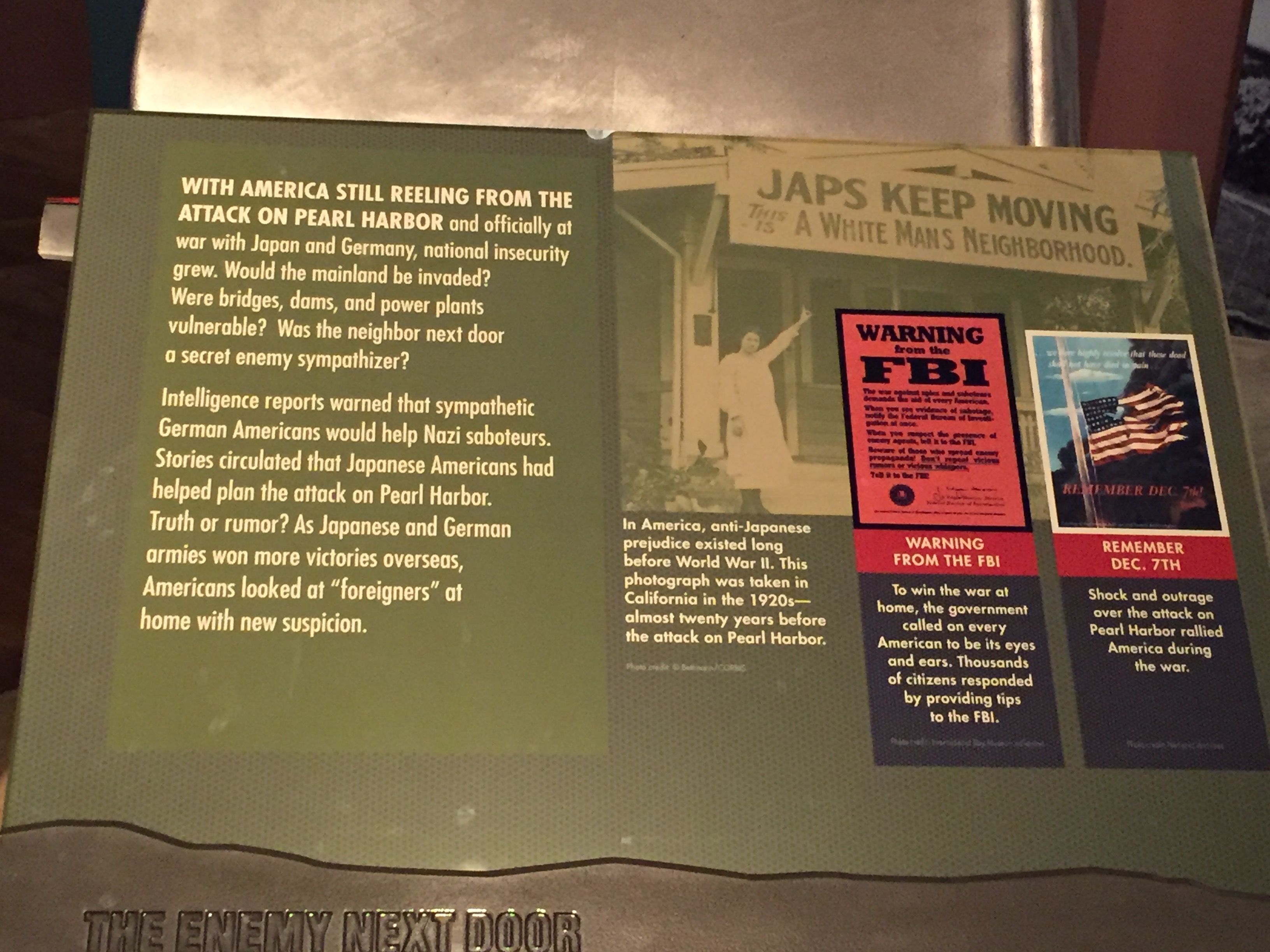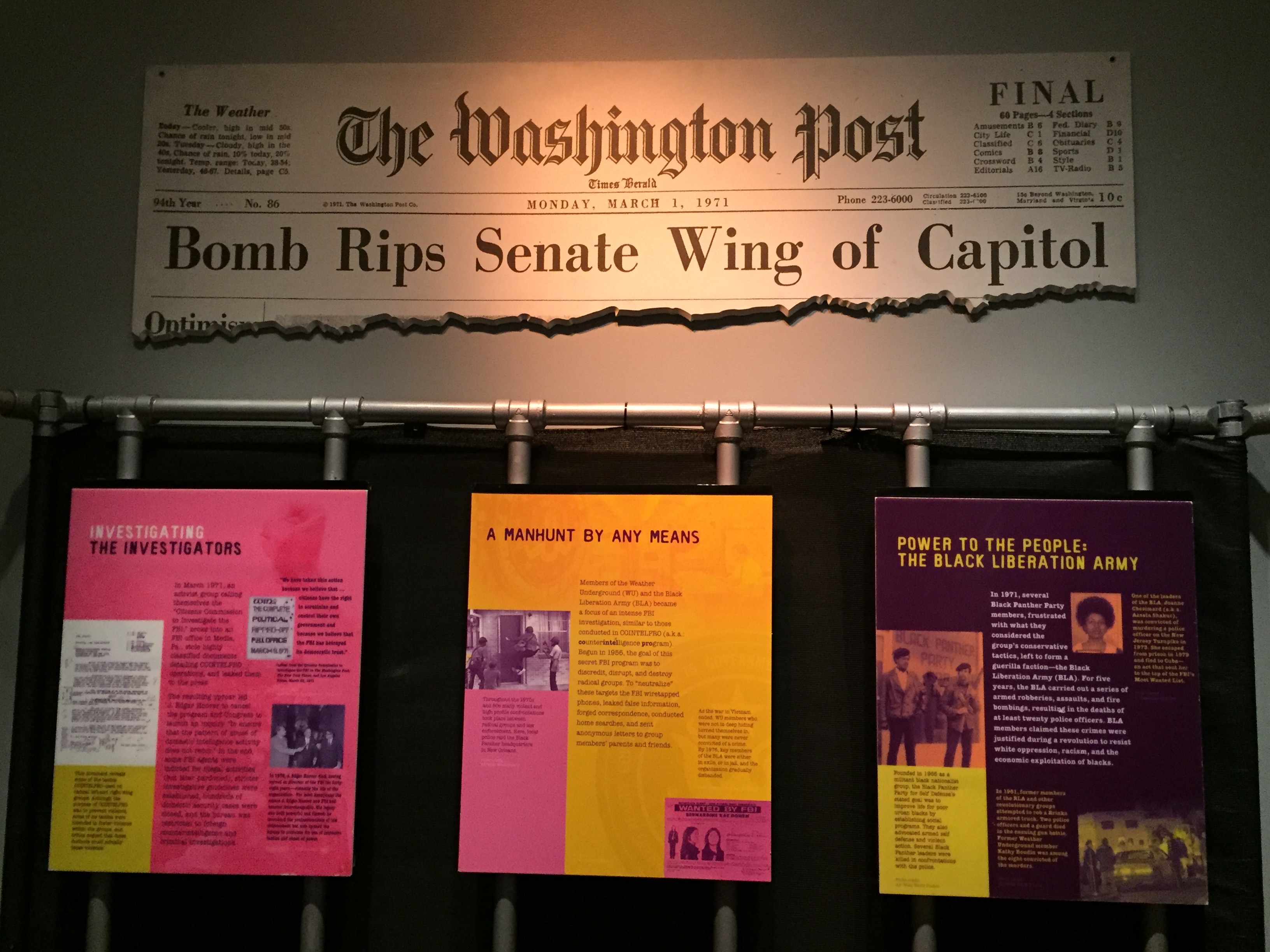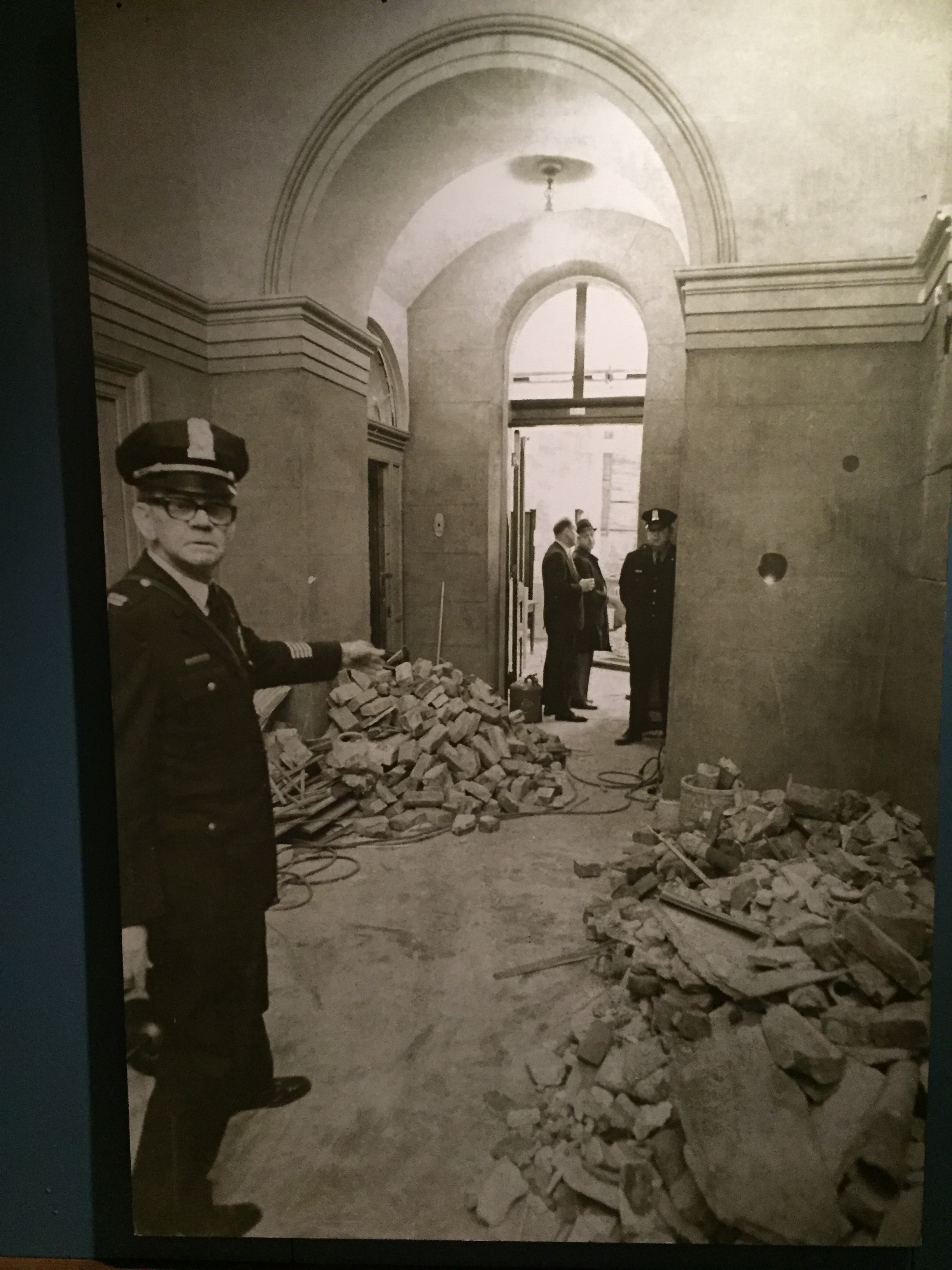 This week, In The Past Lane is in Chicago to check out a cool history exhibition and speak with John Russick of the Chicago History Museum. The exhibition, “Spies, Traitors, and Saboteurs: Fear and Freedom in America,” was originally created by the International Spy Museum in Washington, DC in the wake of September 11. The idea behind it was to explore the way the United States has handled the challenges posed by internal threats — terrorists, spies, saboteurs, hate groups, etc — while at the same time protecting civil liberties. Some of the many incidents it explores includes: the Oklahoma City bombing, the Palmer Raids, the Weather Underground, the Haymarket bombing, Japanese Internment, the KKK, German sabotage efforts during World War I, Soviet spying and McCarthyism, and the militia movement. It’s an exhibition well worth seeing. Here’s a link with more info. I also took a lot of photographs, so if you’d like to see what the exhibition looks like, just scroll down a bit.
This week, In The Past Lane is in Chicago to check out a cool history exhibition and speak with John Russick of the Chicago History Museum. The exhibition, “Spies, Traitors, and Saboteurs: Fear and Freedom in America,” was originally created by the International Spy Museum in Washington, DC in the wake of September 11. The idea behind it was to explore the way the United States has handled the challenges posed by internal threats — terrorists, spies, saboteurs, hate groups, etc — while at the same time protecting civil liberties. Some of the many incidents it explores includes: the Oklahoma City bombing, the Palmer Raids, the Weather Underground, the Haymarket bombing, Japanese Internment, the KKK, German sabotage efforts during World War I, Soviet spying and McCarthyism, and the militia movement. It’s an exhibition well worth seeing. Here’s a link with more info. I also took a lot of photographs, so if you’d like to see what the exhibition looks like, just scroll down a bit.
 After I toured the exhibition, I sat down with John Russick, Vice President of Interpretation and Education at the Chicago History Museum, to talk about why the museum decided to host “Spies, Traitors, and Saboteurs” and why the issues it raises are so very important to our democracy. It’s a really interesting conversation about history and how it should inform the present. Among the many things we discuss:
After I toured the exhibition, I sat down with John Russick, Vice President of Interpretation and Education at the Chicago History Museum, to talk about why the museum decided to host “Spies, Traitors, and Saboteurs” and why the issues it raises are so very important to our democracy. It’s a really interesting conversation about history and how it should inform the present. Among the many things we discuss:
Why Americans are really good at forgetting the past (and why it’s the job of public history institutions to help them remember).
How so many issues that we wrestle with in contemporary American society — immigration, terrorism, radical movements, violations of civil liberties, debates over security vs. liberty — are not new.
How the desire for security in America during tumultuous times has always been in tension with our civil liberties, especially free speech and free thought.
How America has always struggled to define itself and its citizens — What rights are essential? Which ones are the most important? Who should enjoy them? “The work of being a free and fair society,” says Russick, “is never done.”
Why “Spies, Traitors, and Saboteurs,” which was created 13 years ago, is still very relevant in 2017.
Photos of the exhibition: scroll down
Information on the exhibition: here
Further Reading:
“Exhibit on U.S. spies and traitors hopes to speak to present day,” Chicago Tribune, April 19, 2017.
Description of the exhibition from the International Spy Museum – link
Credits:
Music for This Episode
Jay Graham, ITPL Intro (JayGMusic.com)
Kevin McCleod, “Impact Moderato” (Free Music Archive)
Lee Rosevere, “Going Home” (Free Music Archive)
Ketsa, “Escape the Profane” (Free Music Archive)
Jon Luc Hefferman, “Discovery” (Free Music Archive)
The Bell, “I Am History” (Free Music Archive)
Production Credits
Executive Producer: Lulu Spencer
Associate Producer: Devyn McHugh
Technical Advisors: Holly Hunt and Jesse Anderson
Podcasting Consultant: Darrell Darnell of Pro Podcast Solutions
Photographer: John Buckingham
Graphic Designer: Maggie Cellucci
Website by: ERI Design
Legal services: Tippecanoe and Tyler Too
Social Media management: The Pony Express
Risk Assessment: Little Big Horn Associates
Growth strategies: 54 40 or Fight
© Snoring Beagle International, 2017
Photos of the exhibition:



